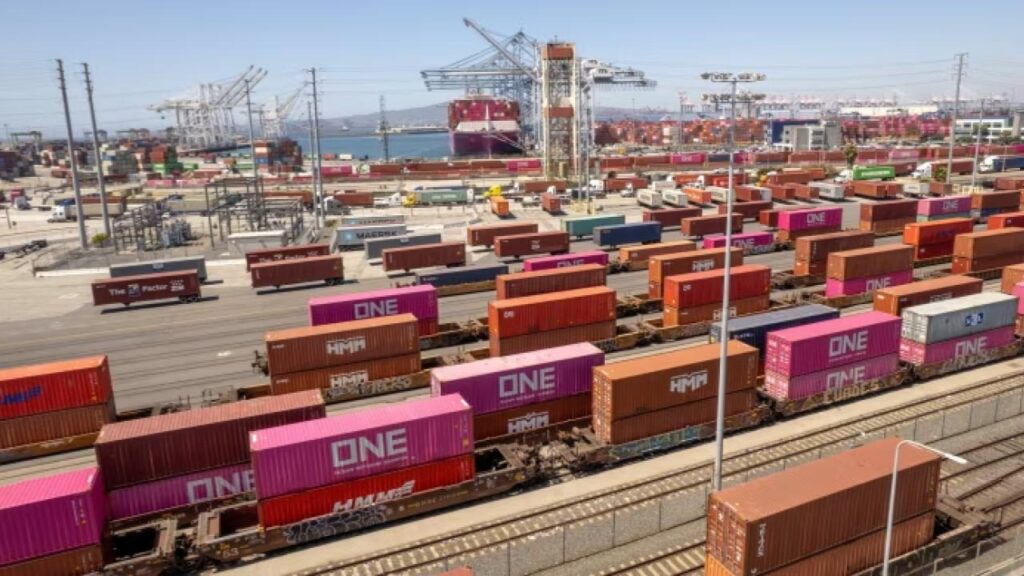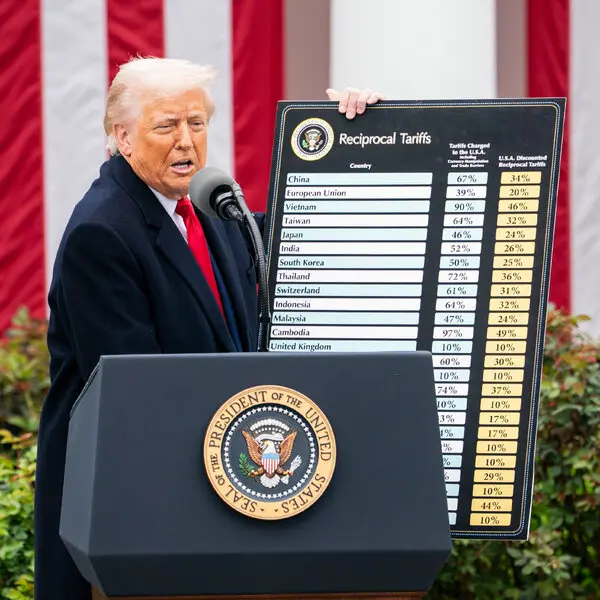In 2025, the U.S. experienced its largest drop in goods exports since 2020, a decline attributed largely to the ripple effects of former President Donald Trump’s trade tariffs. The tariffs, which were implemented during his administration as part of his “America First” trade policy, had intended to reduce trade deficits and protect U.S. industries. However, recent data suggests that the long-term impacts have been less beneficial than anticipated, especially for American exporters. As global supply chains continue to adjust to post-pandemic realities, U.S. goods exports have faced considerable headwinds, and many are looking back to the tariffs as a central factor in this sharp decline.

Trump’s Tariffs to Blame for the Largest Drop Since 2020
| Takeaway | Stat | Source |
|---|---|---|
| U.S. goods exports dropped sharply in 2025 | -5.6% drop in exports year-over-year | U.S. Census Bureau |
| Trump’s tariffs are a significant cause | 73% of manufacturers claim tariffs hindered exports | National Association of Manufacturers |
| Global supply chain disruptions persist | 40% of exporters report challenges in supply chain management | World Trade Organization |
The sharp decline in U.S. goods exports in 2025 serves as a wake-up call to reevaluate the long-term impacts of trade policies implemented during the Trump administration. While the goal of reducing the trade deficit and protecting American industries was well-intentioned, the unintended consequences are clear: tariffs have hurt U.S. exporters, increased costs, and led to a shift in global trade dynamics.
As the U.S. continues to adjust to the evolving global market, it will be crucial to consider a more balanced approach—one that promotes fair trade, reduces unnecessary barriers, and ensures the long-term success of U.S. businesses. The path forward will require thoughtful trade policies that foster global collaboration while protecting American interests.
The Background: Trump’s Tariffs and the U.S. Trade War
The United States has long been one of the world’s largest exporters, with goods ranging from machinery to agricultural products. However, under President Trump, a series of tariffs were levied against several countries, primarily China, as part of his administration’s strategy to force trade reforms and reduce the trade deficit.
The tariffs were meant to incentivize U.S. manufacturers to produce more domestically and protect American jobs. At the time, they were championed as a way to bring more fair and reciprocal trade relations. However, what was not immediately clear was the toll these tariffs would take on U.S. businesses, many of which rely on exports to maintain profitability.
As the world entered the COVID-19 pandemic in early 2020, the global economy experienced severe disruptions, and it became clear that the tariffs were compounding existing challenges. This included delays in shipping, rising costs of raw materials, and retaliation from trading partners.
The 2025 Export Decline: A Cause for Concern
According to the U.S. Census Bureau, goods exports fell by a shocking 5.6% in 2025, marking the steepest decline since the onset of the pandemic in 2020. The data has led economists to reconsider the long-term effectiveness of Trump’s trade policies.
The largest hit was felt in industries such as agriculture, automotive, and machinery, where U.S. companies have been particularly vulnerable to international tariffs and retaliatory trade barriers. For example, China, one of the largest markets for U.S. agricultural exports, has maintained higher tariffs on American farm products, which has deterred U.S. farmers from selling in this key market.
A closer look reveals that some of the most affected industries were those heavily reliant on foreign supply chains. The automotive sector, for instance, has faced increased costs due to tariffs on steel and aluminum imports, which are critical for manufacturing car parts.
The Ripple Effects: Who Is Feeling the Pain?
The damage caused by the drop in U.S. exports is far-reaching. U.S. farmers, manufacturers, and tech companies have all felt the squeeze. In many cases, smaller exporters have been hit the hardest, as they often lack the bargaining power or resources to weather the storm caused by trade barriers.
For example, the National Association of Manufacturers (NAM) surveyed U.S. manufacturers, and 73% of those polled reported that tariffs had either negatively impacted their ability to export or increased the cost of their products abroad. These findings were further supported by a report from the World Trade Organization, which noted that nearly 40% of exporters globally cite supply chain disruptions as one of the most significant obstacles to their businesses’ growth.

The Global Backlash: Retaliation and Shifting Trade Alliances
While the U.S. imposed tariffs to boost domestic production, many countries retaliated with their own tariffs, further exacerbating the decline in exports. For instance, the European Union and China imposed their own set of tariffs on U.S. goods, particularly agricultural products like soybeans, pork, and whiskey.
This retaliation has had long-term consequences, particularly in the agricultural sector, where U.S. exports to China and other countries have been significantly diminished. U.S. farmers, who had previously enjoyed robust exports to China, have seen their market share in Asia shrink, with China increasingly turning to other sources of supply, such as Brazil and Argentina.
Furthermore, the trade war has forced the U.S. to reconsider its trade relationships and alliances. New trade deals, such as the USMCA (United States-Mexico-Canada Agreement), were negotiated to replace NAFTA, but many critics argue that these agreements have not sufficiently counterbalanced the losses caused by tariffs on exports to other key markets.
The Shift Toward Global Supply Chain Rebuilding
Global supply chains were already being reshaped by the pandemic, and this trend has only accelerated post-pandemic. In the wake of continued global trade disruptions, U.S. businesses are being forced to adjust to a new reality where diversification and flexibility are more important than ever. Countries like Vietnam, Mexico, and India have stepped in as alternative trading partners for the U.S., filling in gaps that were once filled by China or other previous trade partners.
However, while these new partnerships may help offset some of the losses, they are not without their own set of challenges. Infrastructure limitations, political instability, and ongoing trade disputes mean that shifting supply chains is not a perfect solution. Companies are finding that it’s not just about finding cheaper suppliers; it’s about finding reliable and flexible ones that can meet demand without major disruptions.
The Future of U.S. Trade Policy
As the U.S. faces these challenges, many experts are calling for a reevaluation of the tariffs that were implemented under Trump’s administration. While tariffs can be an effective tool for negotiating trade agreements, many argue that they have long-term consequences that outweigh the short-term benefits.
Moving forward, the Biden administration has expressed interest in reworking some of these policies, though it remains unclear how exactly the U.S. will shift its trade approach. While some tariffs may be reduced or eliminated in an effort to revitalize U.S. exports, it’s important to note that trade policies must be carefully crafted to avoid further damage to U.S. businesses.
For many American exporters, it may be a matter of “too little, too late.” After years of navigating trade uncertainties, businesses will need more than just policy changes to recover fully from the steep decline in exports.
FAQs
Q: Why did U.S. exports decline in 2025?
The sharp decline in exports was due to a combination of lingering effects from the tariffs imposed during the Trump administration, ongoing global supply chain disruptions, and retaliatory tariffs from trade partners.
Q: Which industries were most affected by the decline in exports?
The most affected industries include agriculture, automotive, and machinery, with companies in these sectors particularly vulnerable to international tariffs and supply chain issues.






